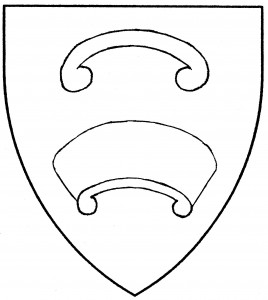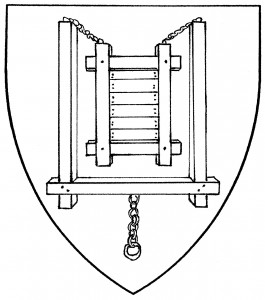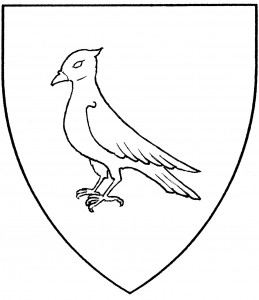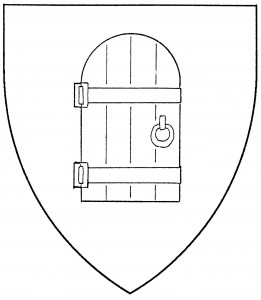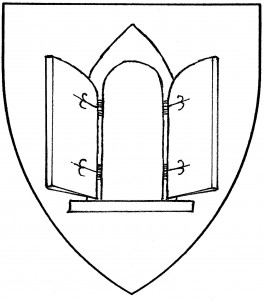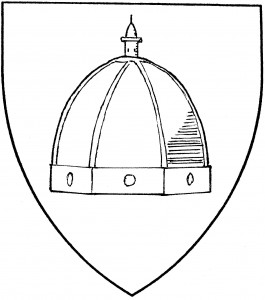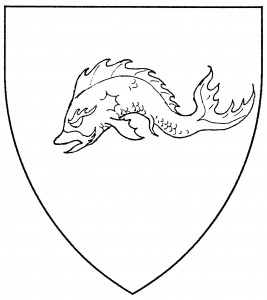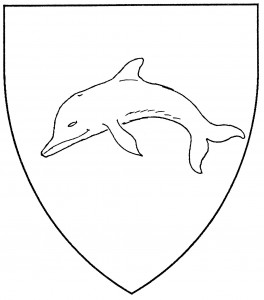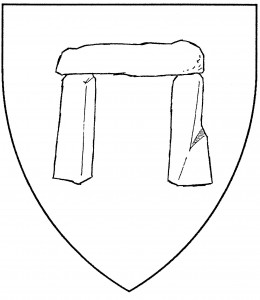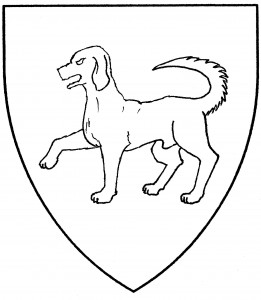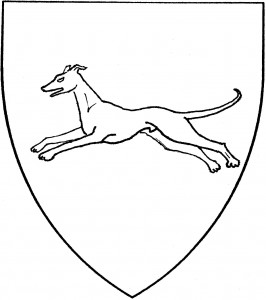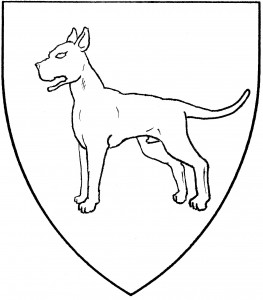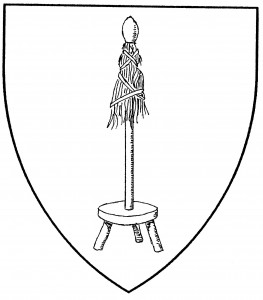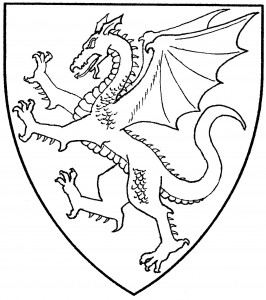
Dragon (Period)
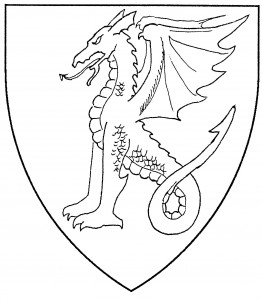
Wyvern (Period)
The dragon is a great reptilian monster with spikes, barbs, bat-wings, and taloned feet. It is sometimes blazoned a “wyrm”, especially for the sake of a cant. A dragon “segreant” is rampant, wings addorsed; this is its default posture.
The dragon’s depiction differed over the centuries, or between countries. The earliest heraldic dragons, for instance, had feathered wings. The dragon’s tail was blunt throughout our period; the barbs at the end were not added until the 18th Century. (This is considered artistic license, and many Society dragons have barbed tails.)
More important is the number of legs. The Society, following current British usage, defines a “dragon” as having four legs. The four-legged dragon had been a badge of North Wales c.1400; with the ascension of the Tudors, the four-legged dragon became one of England’s supporters [Dennys 191]. However, the older form of dragon had only two legs; it dates back at least to 1300, in the arms of Fulbourne [ANA2 493]. British heraldry now blazons the two-legged form a “wyvern” (Continental heralds still call it a “dragon”), and treats it as a variant of type. The wyvern’s default posture is variously blazoned “statant” or “sejant”: for wyverns, the two postures are deemed equivalent. At one point, the Society granted no difference between the four-legged dragon and the two-legged wyvern; the current policy now grants difference for type between these two.
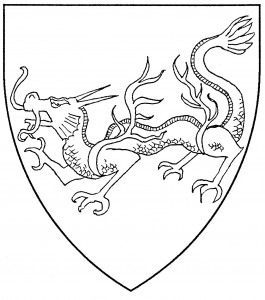
East Asian dragon passant (SFPP)
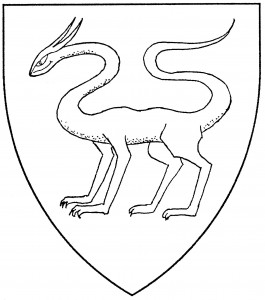
Dûn dragon (Disallowed)
There are other variations of the dragon. The “hydra” is a multi-headed dragon; classically described with nine heads, the 16th Century heraldic form has as few as three [de Bara 85, 143]. (The number of heads should be blazoned.) The “East Asian dragon” is wingless, and drawn in a Chinese or Japanese stylization (and sometimes specifically blazoned as “Chinese” or “Japanese”); it’s permitted in Society armory, with its use deemed a step from period practice. Finally, the “Dûn dragon” is a Society invention, with no wings, two horns, long spindly limbs, and a dopy grin; it is defined in the arms of the Shire of Anlieplic Dûn. This form is no longer used save for the Shire’s armory.
Wyverns displayed are considered a step from period practice; dragons displayed are no longer permitted. For related charges, see amphisbaena, cockatrice, griffin, lion-dragon, naga, Norse beasts, orm, pithon.
The King of the Middle bears: Argent, a pale gules, overall a dragon passant vert, in chief an ancient crown Or within a laurel wreath proper.
The Baron of Wyvernwoode bears: Vert, a wyvern passant argent, winged and bellied within a laurel wreath Or.
The Shire of Anlieplic Dûn bears: Per pale sable and argent, a laurel wreath between two Dûn dragons combattant counterchanged.
Éowyn Amberdrake bears: Azure, in pale three dragons passant Or.
Katrina Pietroff bears: Azure, a seven-headed hydra statant argent.
Joseph the Good bears as a badge: Gules, a Japanese dragon passant Or.
